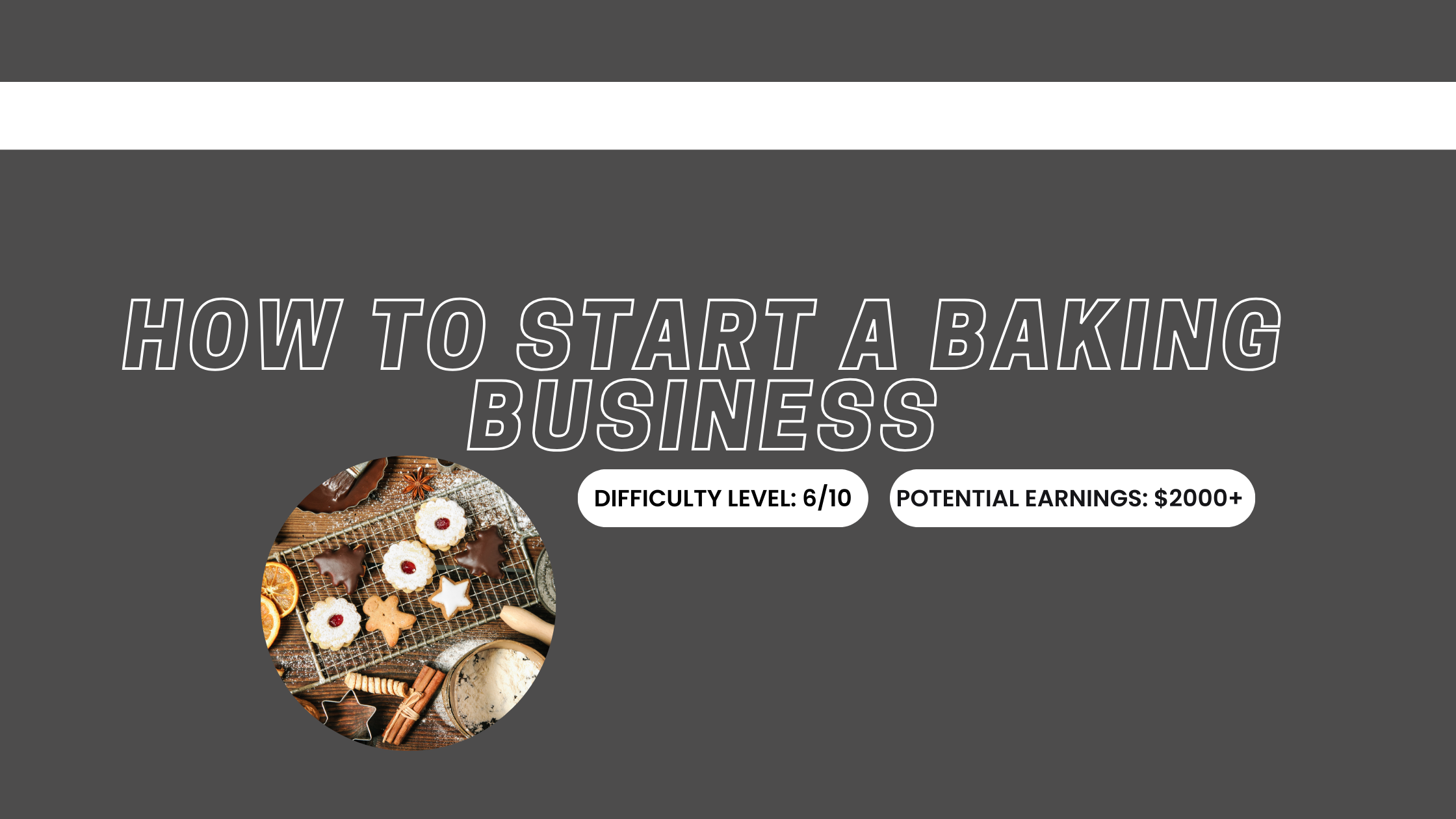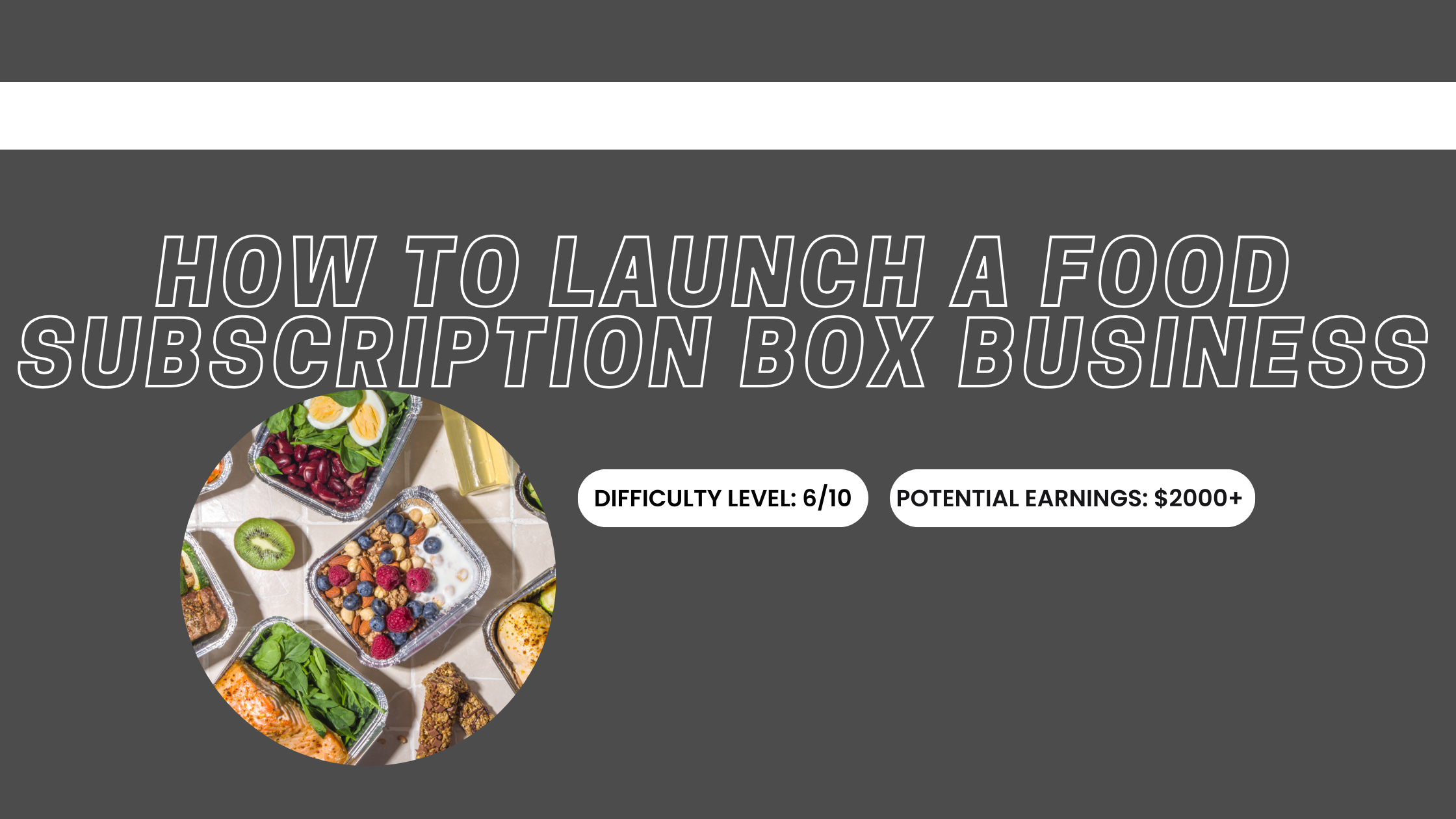How to Launch a Food Subscription Box Business
Time & Money
Difficulty
6/10
Weekly Time Commitment
15-20 hours
Earnings Per Month
$2,000 - $10,000 (depending on customer base and pricing structure)
Is This Side Gig For Me?
If you’re passionate about food, enjoy curating unique experiences, and love connecting with people, learning how to start your own food delivery business could be a recipe for success. This side hustle is perfect for individuals with a knack for sourcing quality ingredients, staying organized, and building a brand from scratch.
However, it’s not all smooth sailing. This gig demands attention to detail, patience, and a willingness to adapt to fluctuations in demand. You’ll be juggling logistics, customer service, and creative branding while keeping perishable products in peak condition. If you’re someone who thrives on creativity, logistics, and building strong customer relationships, this is your chance to shine. And if you’ve been wondering how to start a meal delivery service, read on—you’re in the right place.
Preparation
Before you jump in to start your own food delivery business, research first. Investigate the market and find trending niches - health-focused meal kits, international cuisine or gourmet treats. Know your ideal customers & their tastes.
Secure high quality, safety-orientated suppliers. You need consistency whether you work with local farms, gourmet producers or wholesalers. Build a website to handle subscriptions, payments and customer inquiries seamlessly. Lastly, develop logistics for packaging and shipping so your products arrive fresh and intact, delivering a great first impression.
Execution
Identify Your Niche
The first step in how to start a meal delivery service is carving out your niche. Focus on something that excites your target audience, like vegan snacks, regional specialties, or globally-inspired meals. The more unique your offering, the easier it will be to stand out. Trendy or underserved markets can offer a competitive advantage and draw in loyal customers.
Partner with Suppliers
Your suppliers make up your business. Such partnerships should provide quality ingredients at a fair price. Negotiate terms like minimum orders, delivery schedules & exclusive offers to ensure reliability and consistency. A diverse supplier base also protects against disruptions in your supply chain.
Set Up Your Website and Subscription Model
Your website will be the face of your business- so make it easy to use and visually appealing. For subscriptions and payments, platforms like Shopify or CrateJoy are great. Provide tiered subscription plans and customizable options to accommodate a wider audience. Use high resolution images and convey a brand story that captures the essence of your business. Highlight the benefits of your service - convenience, freshness and uniqueness - to convert visitors to subscribers.
Design and Package Your Boxes
Packaging plays a massive role in customer satisfaction. Your boxes should reflect your brand, be durable, and keep food fresh. For temperature-sensitive items, consider insulated packaging or ice packs. Sustainable, eco-friendly materials can also resonate with environmentally-conscious customers. The unboxing experience should delight and surprise—this is where you can create a lasting impression.
Marketing and Building Your Brand
So now you know how to start a food delivery business, it's time to tell the world. Put your visuals and stories on social media platforms like Instagram and TikTok. Collaborate with influencers or food bloggers. Offer referral bonuses to get current subscribers spreading the word. Seasonal promotions, limited edition boxes or themed offerings can spark engagement.
Streamline Shipping and Logistics
Logistics have to be efficient. Select reliable shipping partners that understand perishable goods. Utilize third-party fulfillment centers if managing inventory and packaging in house becomes overwhelming. Providing clarity regarding shipping times and tracking details will help customer's to have a better experience.
Monitor Customer Feedback and Adapt
Customer feedback is your compass. Regularly solicit reviews, send out surveys, and analyze responses to identify areas for improvement. Whether it’s tweaking your product lineup, refining the unboxing experience, or improving delivery times, adaptability will keep your customers satisfied and coming back for more.
Bumps In The Road
Managing Food Safety and Quality
Working with perishable items means food safety must be a top priority. Spoiled or damaged products can harm your reputation. Invest in insulated packaging, maintain proper handling procedures, and work only with suppliers who meet stringent safety standards.
Predicting and Managing Inventory
Balancing supply with demand is a tightrope walk. Too much inventory can lead to waste, while too little can result in dissatisfied customers. Launch limited-time boxes or pre-orders to test demand before making significant investments. Keep a close watch on subscription data to forecast accurately and avoid stockouts.
Customer Retention and Expectations
In the world of subscriptions, customer retention is the ultimate goal. If your offerings grow repetitive or lack excitement, subscribers may cancel. Keep things fresh by introducing new items, offering exclusive perks, or surprising customers with themed boxes. Regular communication and responsiveness to feedback are essential for building long-term loyalty.'
Final Thoughts
Learning how to start a meal delivery service or building how to start your own food delivery business doesn’t just feed a market need—it lets you connect with customers through shared experiences and delicious products. With a solid niche, efficient logistics, and creative marketing, you can build a business that satisfies both your passion and your pocketbook. Ready to create your first box? Start curating and let the flavors fly!
Continue Learning

Start a Baking Business
A comprehensive guide on how to start a baking business, including tips on defining your niche, managing inventory, and marketing yourself.
